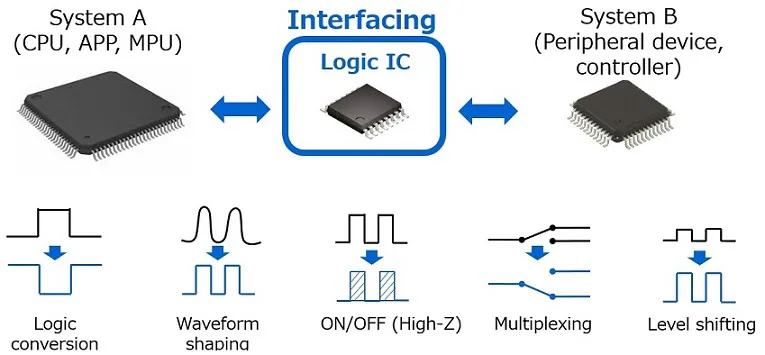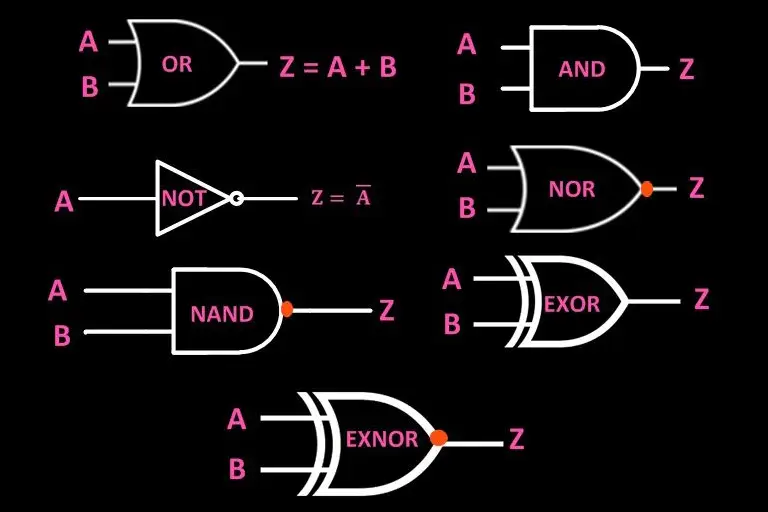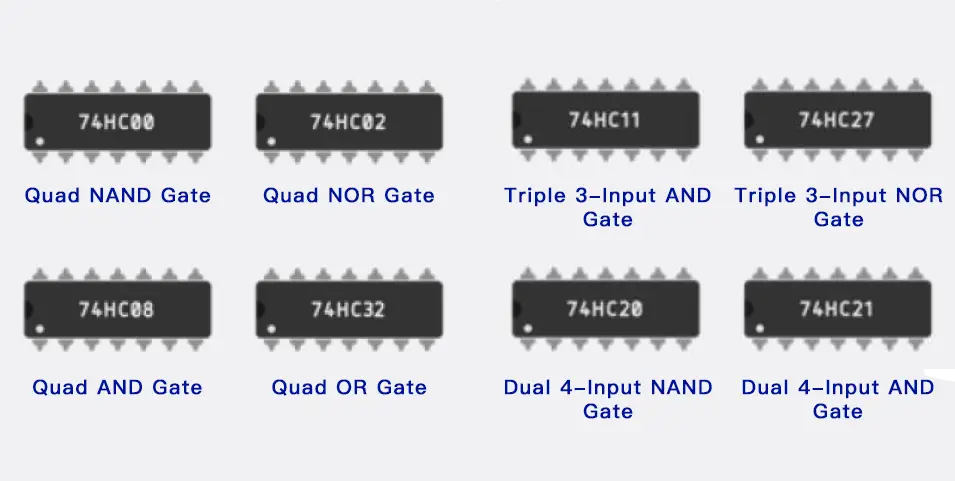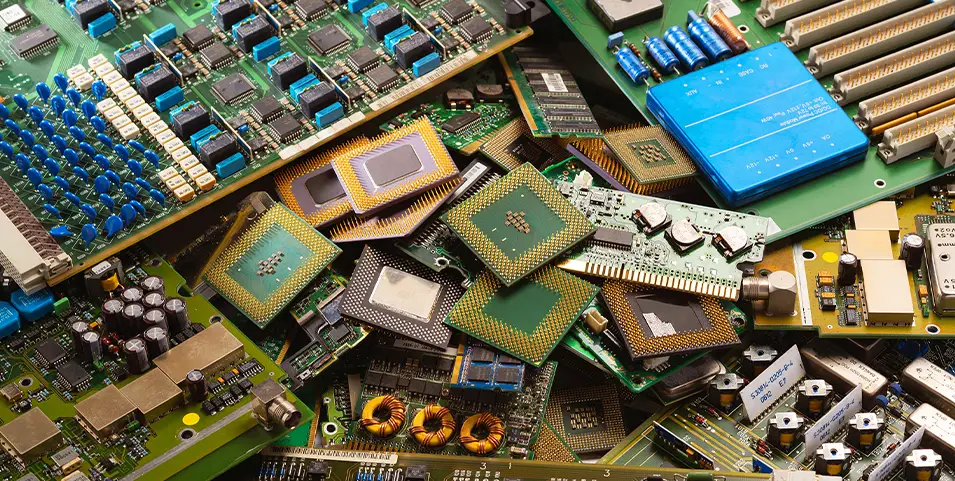Logic chips are the fundamental building blocks of modern digital electronics, forming the backbone of virtually every electronic device. These tiny pieces of silicon are responsible for performing logical operations, processing data, and executing instructions that drive the functionality of computers, smartphones, and countless other devices.
But what is a logic chip? This article will delve into the intricacies of logic chips, their functions, types, and their significance in today’s technological landscape.
What is a Logic Chip?

To understand what a logic chip is, we need to start with the basics of digital electronics. A logic chip, also known as an integrated circuit (IC), is a semiconductor device that contains multiple interconnected electronic components. These components, such as transistors, resistors, and capacitors, work together to perform specific functions. Logic chips are designed to handle digital signals, which are represented by binary code (0s and 1s).
In essence, a logic chip can be thought of as a miniaturized electronic brain. It processes input signals, performs calculations, and generates output signals based on predefined logic rules. The complexity of a logic chip can vary widely, from simple circuits that perform basic functions to highly sophisticated processors that power advanced computing systems.
The Role of Logic Chips in Digital Systems

Logic chips play a pivotal role in the functioning of digital systems. They are used in various applications, including computation, data storage, communication, and control. Here are some key areas where logic chips are indispensable:
Central Processing Units (CPUs)
The CPU, often referred to as the brain of a computer, is a prime example of a complex logic chip. It executes instructions from programs, performs arithmetic and logical operations, and manages data flow within the computer. Modern CPUs contain billions of transistors, making them incredibly powerful and capable of handling a wide range of tasks simultaneously.
Memory Devices
Memory devices, such as RAM (Random Access Memory) and ROM (Read-Only Memory), rely on logic chips to store and retrieve data. These chips enable quick access to data, which is crucial for the efficient operation of computers and other digital devices.
Microcontrollers
Microcontrollers are specialized logic chips designed for specific applications. They are commonly used in embedded systems, such as automotive electronics, home appliances, and industrial automation. Microcontrollers integrate a CPU, memory, and input/output peripherals on a single chip, making them versatile and efficient for controlling various processes.
Digital Signal Processors (DSPs)
DSPs are logic chips optimized for processing digital signals, such as audio, video, and communication signals. They are widely used in applications like audio processing, image recognition, and telecommunications, where real-time data processing is critical.
Types of Logic Chips

Logic chips come in various types, each tailored to specific functions and applications. Understanding the different types of logic chips helps us appreciate their diverse capabilities:
Combinational Logic Chips
Combinational logic chips perform operations based solely on the current input signals. They do not have memory elements, meaning their output is determined directly by the input. Common examples include basic logic gates (AND, OR, NOT) and arithmetic circuits (adders, subtractors).
Sequential Logic Chips
Sequential logic chips, in contrast, have memory elements that allow them to store and process past input states. This enables them to perform more complex functions, such as counting, data storage, and state machines. Flip-flops and registers are common examples of sequential logic elements.
Programmable Logic Devices (PLDs)
PLDs are versatile logic chips that can be programmed to perform a variety of functions. Field-Programmable Gate Arrays (FPGAs) and Complex Programmable Logic Devices (CPLDs) are popular types of PLDs. These chips can be configured by the user to implement custom logic circuits, making them ideal for prototyping and specialized applications.
Application-Specific Integrated Circuits (ASICs)
ASICs are custom-designed logic chips tailored for specific applications. Unlike general-purpose logic chips, ASICs are optimized for particular tasks, offering high performance and efficiency. They are commonly used in consumer electronics, telecommunications, and automotive systems.
The Manufacturing Process of Logic Chips
The manufacturing of logic chips is a complex and highly precise process. It involves several stages, from design and fabrication to testing and packaging. Here’s an overview of the key steps involved:
Step 1: Design
The design phase involves creating a blueprint of the logic chip’s circuitry. Engineers use specialized software to design the chip, specifying the arrangement of transistors, interconnections, and other components. This design is then converted into a set of masks used in the fabrication process.
Step 2: Fabrication
Fabrication takes place in a cleanroom environment to prevent contamination. The process begins with a silicon wafer, which is coated with a layer of photoresist. The design masks are used to expose the wafer to ultraviolet light, creating a pattern on the photoresist. This pattern is then etched into the silicon wafer, forming the microscopic structures of the logic chip. Multiple layers are built up through repeated steps of deposition, lithography, and etching.
Step 3: Doping and Metallization
Doping introduces impurities into the silicon to modify its electrical properties, creating regions of n-type and p-type semiconductors. Metallization involves depositing metal layers to form the interconnections between different components on the chip. These interconnections are essential for the chip’s functionality.
Step 4: Testing and Packaging
Once fabricated, the chips undergo rigorous testing to ensure they meet quality and performance standards. Defective chips are discarded, while functional ones are packaged for protection and ease of handling. The final packaged chips are then ready for integration into electronic devices.
The Significance of Logic Chips in Modern Technology

Logic chips are integral to the advancement of modern technology. They enable the miniaturization of electronic devices, making them more powerful and efficient. The rapid development of logic chips has driven innovations in various fields, from computing and telecommunications to healthcare and automotive systems.
Computing
The evolution of logic chips has revolutionized computing, leading to faster and more powerful computers. Advances in CPU design, such as multi-core processors and parallel processing, have significantly enhanced computational capabilities, enabling complex applications like artificial intelligence and machine learning.
Telecommunications
Logic chips play a crucial role in telecommunications, facilitating the processing and transmission of data over networks. They are essential components in smartphones, routers, and network infrastructure, enabling seamless communication and connectivity.
Healthcare
In the healthcare industry, logic chips are used in medical devices, diagnostic equipment, and wearable health monitors. These chips enable real-time data processing, improving patient care and enabling remote monitoring and telemedicine.
Automotive Systems
The automotive industry relies on logic chips for advanced driver-assistance systems (ADAS), infotainment systems, and engine control units (ECUs). These chips enhance vehicle safety, performance, and connectivity, paving the way for autonomous driving and smart transportation.
Conclusion
In conclusion, logic chips are the cornerstone of modern digital electronics. They perform essential functions in computing, communication, and control, driving innovation across various industries.
Understanding what a logic chip is and its significance helps us appreciate the incredible advancements in technology that have shaped our world. As technology continues to evolve, logic chips will remain at the forefront of innovation, powering the next generation of electronic devices and systems.